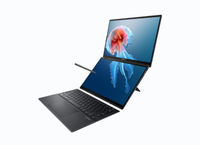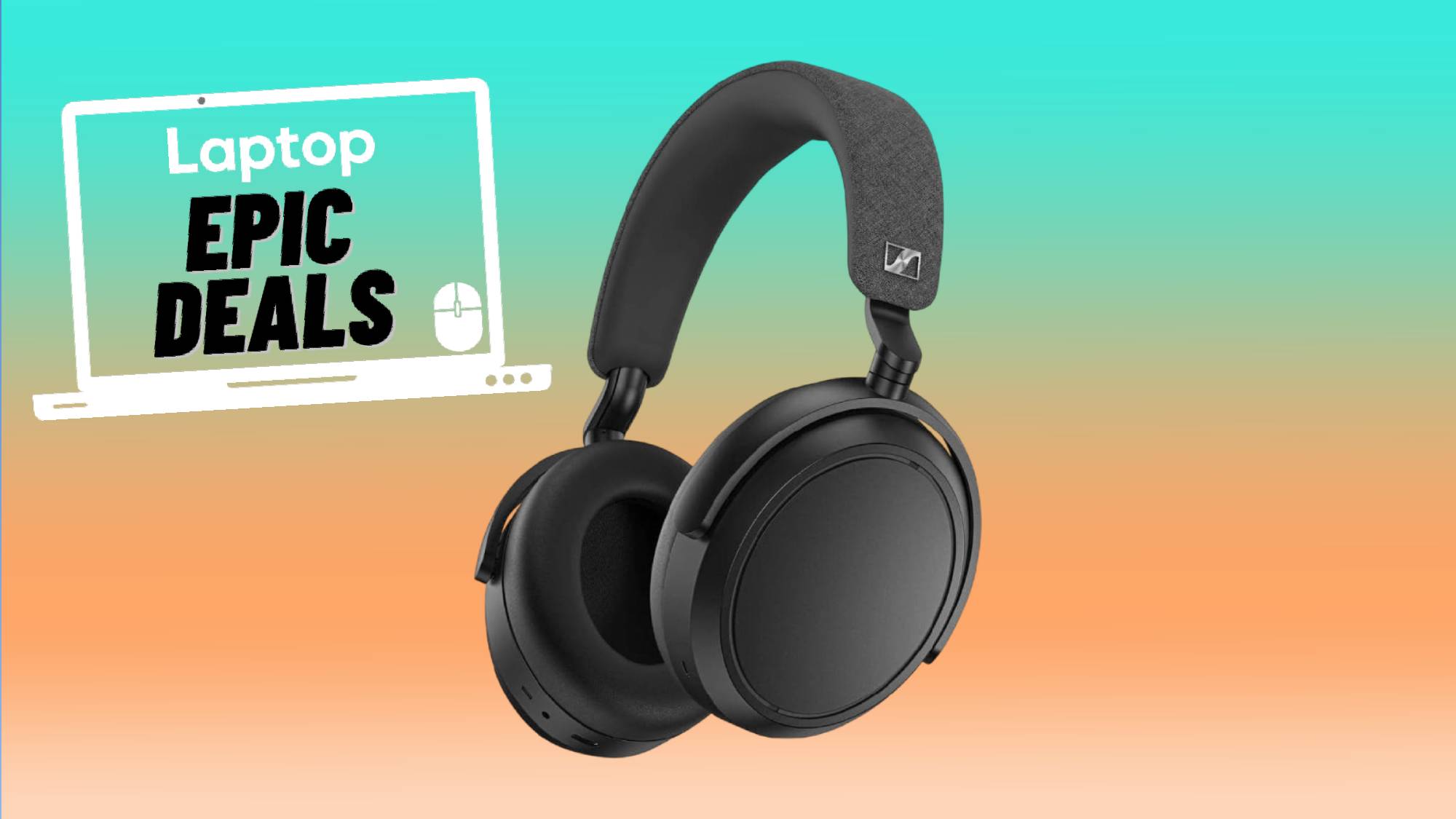
My workflow is based around having a dual-monitor laptop setup with two screens to play with. This isn't about screen real estate as much as it is about window organization.
These days, when I travel with a laptop, I need to pack a second portable monitor, but that all changed when Asus sent me the Zenbook Duo 2025 to review. I love this device, and I feel like it was designed with users like me in mind.
The Asus Zenbook Duo earns its name because it is a dual-screen clamshell laptop with a removable keyboard. You can use the Duo in "laptop mode" with the keyboard resting on the bottom screen, attached with pogo pins. A built-in kickstand enables you to use two screens positioned either horizontally or vertically — I'm more of a horizontal guy myself.
Additionally, the Zenbook Duo comes with many of the same specifications as some of the best laptops out there. First, there are the dual 14-inch OLED displays, 32GB of RAM, 1TB of storage, and a 75 Wh battery that will last you up to eight hours, even if you're using both screens. There's also a ton of ports, including a full-sized HDMI 2.1 port, 2 USB-C ports, 1 USB-A port, and a 3.5mm audio jack, all in a package that weighs just over 3.5 pounds. That's not bad!
But there are a few things to know about before you throw down a penny under $1,700 for this puppy. There are some good reasons to buy this laptop and a few to stay away. I've been using the laptop for almost a month, including a trip to MWC in Barcelona, and this is what I've learned.
Features: Dual 14-inch 3K (2880 x 1800) OLED 500-nit touchscreen display with 120Hz refresh and 100% DCI-P3 color, an Intel Core Ultra 9-285H CPU, Intel Arc GPU, 32GB of RAM, 1TB SSD.
Portability and Versatility

Dual-screen laptops are great because they allow for any number of combinations of windows when needed. When everything is closed on the Zenbook Duo, the keyboard slides between the two screens, opening and closing like a traditional laptop. When you open it up, you can leave the keyboard in place and use it with one screen, or remove the keyboard.
When you do, you can set up the laptop in what Asus calls "Dual-screen mode" and "Desktop mode". Dual screen mode sees a top and bottom configuration for the screens in landscape. Desktop mode allows you to place the screens side-by-side in portrait, giving you a left and right side screen. The built-in kickstand works with either configuration.
Get The Snapshot, our free newsletter on the future of computing
Sign up to receive The Snapshot, a free special dispatch from Laptop Mag, in your inbox.
The laptop is built with the top screen set back from the bottom screen — that's what enables the keyboard to fit between them when closed. When opened, especially in desktop mode, the screens sit a tad skewed, so that both screens lean slightly to one side. It's easy to get used to, but it's still noticeable. But, the ability to set up this laptop in any configuration according to your environment and needs is really valuable.
A weighty concern

When I headed to MWC 2025, the Asus Zenbook Duo was in my bag, but only for when I was working back at the hotel. I also carried a second laptop with me on the plane — the Lenovo IdeaPad 5X laptop powered by a Qualcomm Snapdragon Plus processor. The Asus Zenbook Duo, at 3.8 pounds, isn't too heavy, but heavy enough that it was a consideration to carry it around the show floor daily.
Of course, because of my job, I ended up reviewing the IdeaPad on the show floor instead, and as a midrange laptop, it too was on the hefty side at 3.3 pounds. It was still half a pound lighter than the Duo, and at 20,000 steps per day, every half pound helps.
This is a very niche case, but if you have a sort of "home base" and you have to roam show floors from time to time, you will need to decide in this regard. If weight is a primary concern, one of the best Ultrabooks may be a better solution for you. My latest daily driver laptop is the Lenovo ThinkPad X1 Carbon Gen 13, which weighs just over two pounds, and that's a very big difference.
Great for research and coding

Having a laptop with dual screens opens up a whole new world for research. Multiple tabs are great for figuring out what information you need and how to organize it, but dual screens give you an extra dimension to play with. I have two predominant use cases.
When I'm writing, I usually have the laptop in dual-screen mode with a top and bottom screen. The top screen holds all my research, spec sheets, news stories, etc, that I need to reference. The bottom screen is where I write. I'm used to this positioning because when I'm in dual-screen mode and the keyboard is up against the bottom screen, it's reminiscent of just having a laptop open. When I'm editing another writer's work, it's a similar setup with the article information on the top screen and the article I'm editing on the bottom.
If you're a coder, you may prefer desktop mode with the screens in portrait orientation, giving you maximum height for reading as much code as possible. In the meantime, you can keep a preview window open or a stack exchange browser open. I don't code, so I'm guessing here. Of course, how you use the laptop will depend on your workflow, but the laptop is versatile enough to accommodate just about anything.
Battery life is good, but not great

One of the surprising aspects of this device is the battery life. I work eight-hour shifts as an editor and I was a little surprised to see this laptop make it through an entire shift on a charge. I was always using both screens with multiple browser windows open, adding up to a couple of dozen tabs, and some messaging apps like Facebook Messenger, Telegram, and Slack all open.
I also generally have the brightness as low as I can tolerate — roughly 25% and 35%, so that's a big help. But even so, that's pretty impressive battery life for a computer running two screens. That being said, with the battery life that short, I also feel the need to carry a charger with me. Fortunately, the charger that comes with the laptop is fairly compact — it has a big brick that plugs into the wall and charges via USB-C so that you can use the charger for other devices. All the same, it would be nice to leave the hotel with this laptop and not have to worry about making it through the whole day.
Dual-screen gaming

One aspect of the computing experience that shouldn't be overlooked is the idea of dual screen gaming. The Zenbook Duo is capable of some gaming — you won't be playing "Call of Duty" on it or anything — since it lacks the discrete GPU that most gaming laptops have. That being said, you can play some lighter games on this PC. I particularly enjoyed Warcraft II — which is an old-school game that runs in an emulator.
The dual-screen setup allows me to have a supporting document open such as a cheat guide or a YouTube Video walkthrough for a particularly challenging section. This has helped me on more than one occasion with this game on my multiple-monitor setup on my home PC. Simply the ability to have that documentation open in a second window has been huge.
Value
At $1,699, this laptop is a decent buy. Make no mistake, though; it's more expensive than a similarly specced laptop with only one screen. There are a lot of extra parts and R&D that go into the price of this laptop. That doesn't mean it's a bad buy, far from it, but it can strain the budget.
Ultimately, you'll have to decide if the utility this device provides is worth the extra money to you. The base model MacBook Pro 14-inch M4 costs less, as do many of the best Lenovo laptops and best Dell laptops. So it's ultimately a choice you'll have to make whether the extra money is worth it.
Personally, it is for me. I don't game much, so I don't need a super powerful laptop to get by. In fact, if not for the strong desire to use a dual-screen laptop, I'd probably be good with the cheapest laptop with the best battery life. That said, if I had to buy a new laptop today, the Zenbook Duo would be a strong contender.
Windows software is getting better

Dual-screen laptops are not new. Companies like Asus, Lenovo, and even HP have all experimented with the concept for some time now. Up until recently, Windows has been a major limiting factor. As good as Windows is as an operating system, it hasn't always played nicely with unusual form factors. Basically, as long as your computing was going to be limited to a monitor, mouse, and keyboard, Windows was great.
Once you introduce a rogue element, like a folding screen or dual screens, Windows could get a little funky. If we're being honest, it can still go a little crazy from time to time, but in the past few years, Windows has been getting flakey much less than before. That's good news, not only for dual-screen laptop makers but also for other form factors like folding screens or handheld gaming machines. Not long ago, I would have listed Windows software as a con, but recent developments have shifted it into being a pro.
Is dual-screen laptop life for you?
At the end of the day, whether or not a dual-screened laptop is for you comes down to what works for you and how much you value that form factor. If you're like me and your entire workflow centers around two (or more) screens, then the Zenbook Duo is a solid buy. If you prefer to move around a lot, you might want to get a more traditional laptop.
I very much value the fact that I can use this laptop anywhere. That's why it will remain a staple in my bag. The fact that it's a conversation starter also helps. The arguments against buying the laptop aren't convincing compared to the benefits. All three concerns here are comparatively minor in the grand scheme of things. They all pale in comparison to what this laptop (and others like it) can truly bring, making dual-screen laptops one of the most compelling additions to the best 2-in-1 laptops on the market.

Adam has been a leader in the tech media field for over a decade, with bylines at SlashGear, CNN Underscored, CNET, Digital Trends, and more. When he's not hosting the Benefit of the Doud podcast, he's busy getting his hands on as many phones, tablets, and laptops as possible. He regularly rotates between iOS and Android, and he fully embraces technology.
You must confirm your public display name before commenting
Please logout and then login again, you will then be prompted to enter your display name.

